Racism still being handed down in Northampton deeds, search finds
|
Published: 02-28-2025 5:10 PM
Modified: 03-01-2025 7:16 PM |
Editor’s note: This story has been updated to reflect that the University of Massachusetts Amherst does not have racially restricted covenants in Northampton.
NORTHAMPTON — “These premises shall not be conveyed to or occupied by any colored persons.” So reads as many as 140 property deeds in the city.
Others say that, “The premises shall not be sold, rented or leased to any person or class of persons whose ownership would be injurious to this locality for residential purposes,” with a couple of them also restricting “Polish, Lithuanians, and Hebrews” from property purchases.
These add up to 250 racial covenants included in Northampton property deeds that have been unearthed at the Registry of Deeds by Northampton’s Reparations Study Commission. A discussion organized by the commission on Feb. 20 in the basement of the Unitarian Society of Northampton and Florence zeroed in on who is responsible, and why some of these deeds are being renewed — since some have been signed as recently as 2022.
“Racial covenants existed in Northampton, but they trickle down to today,” said Bill Newman, a Northampton-based lawyer and co-host of “Talk the Talk” on WHMP, who with Hampshire Registrar Mary Olberding has spearheaded a search through the city’s public records.
The search, Newman said, has uncovered a story of “equal opportunity discrimination” in Paradise City. Going through these deeds, predominantly by hand, Newman said he has felt “the same feeling of chilling exclusion” as he did in Virginia in 1961 when he experienced a segregated bathroom.
As the research into these deeds progressed — part of the commission’s work that has been ongoing for almost two years to bring to light and heal the history of racial discrimination — Newman considered: “Which homeowners read their deeds?”
His “aha” moment followed.
Article continues after...
Yesterday's Most Read Articles
“It’s a question of the mortgages, because the mortgages allow these properties to be transferred,” he concluded, which means that not homeowners, but rather the institutions that processed the mortgages, that are to blame.
“This isn’t about individual owners who may or may not have an idea what’s in their deeds, but it’s very much about the institutions that allow this to go on year after year, after decade after decade,” said Newman.
Previous restrictions are often incorporated into the latest edition of the deed. But then there are those that continue to be more explicit.
“Why is the language still there? Why is it still being carried forward? Why is it still being referenced? There are, in fact, ways to remedy this. And in fact some lawyers did some things and added words, such as incorporating restrictions of record, and added the words ‘if applicable,’” Newman said.
Institutions he mentioned include Amherst Savings Bank, Easthampton Savings Bank, Bank of America, Florence Savings Bank, Northampton Cooperative Bank, Greenfield Savings Bank, PeoplesBank, UMassFive College Credit Union and the Homeowners Association of Washington, D.C.
TD Bank North, he said, also has had “significant involvement in all this,” he said.
Additionally, Newman located three Smith College properties with racially restricted covenants, dating from as recently as 2016.
The “why” remains a mystery — but Newman said he will be asking these institutions, and requested in the reparations study commission’s preliminary report, released in December, that they assist in unearthing such deeds.
“We’ll see how they wish to respond,” he said.
The majority of the deeds with racist covenants came from two Northampton developers in the 1920s: Charles Sauter and Champion Swift, and many of these covenants would be conveyed between 1923 and 1947, according to Newman.
Swift is described in the preliminary report on these deeds as having “animus against African Americans,” although his deeds more often had coded racist language, or language that implied racist sentiments.
Sauter’s deeds, however, were more often explicitly racist against African Americans.
According to Newman, they did not build most of the houses “or even any of their houses, but they did convey the property.” Sauter’s properties included parts of Maynard Road and Forbes and Washington avenues. Areas adjacent to Smith College had been Swift properties, as well as some on Blackberry Lane (formerly Hollywood Heights) and Ridgewood Terrace.
Then in 1948, mild progress was made in desegregating the country by making racial covenants null and void.
Even before the Fair Housing Act of 1968, racial covenants were found to be “unenforceable” by the Supreme Court in the 1948 case Shelley v. Kraemer, which decided the case 6-0 — with three of the justices recusing themselves to avoid a conflict of interest because they owned properties with racial covenants.
“The 1948 decision was decried by senators and congressman and leaders across the United States and white groups and white citizens, who said we should retain the ability to and the prerogative to keep our neighborhoods completely white,” Newman said.
“Unenforceable,” the word in the ruling, is key, said Newman, since the Supreme Court did not rule racial covenants to be either “illegal” or “unconstitutional.” In the aftermath of the 1948 decision, “there wasn’t a lot of joy” said Newman, and many of these useless covenants persisted through time.
But “why” remains a question. After the Feb. 20 public discussion, he commented: “These deeds and mortgages with racist covenants have not been hiding in plain sight because they have not been hiding at all. Rather, they all are, and have been, public records available for review, inspection and analysis.”
Some of the two dozen people who gathered for the discussion, including members of the African American community, insisted that “microaggressions” in the city today can be traced to this history of exclusionary behavior based on racial prejudice as evidenced by the racial covenants.
Claudia Wilson, an African American, said she has grown to “hate” the city: “There’s just so many different microaggressions that happen here to me. Just people outright staring at me, and I don’t want to go into the litany.”
Amilcar Shabazz said the evening reminded him of when he was moving to the area in March 2007 with his wife, as a young professor looking for a place to live with a reasonable commute to UMass Amherst, where he currently teaches history and Africana studies.
“We did not know anything about this area our first time here, and we entrusted ourselves to a real estate agent to show us where we could live,” he said. “That agent steered us away from Northampton, and now I begin to wonder if this legal real estate mortgage financing is somehow in the deep memory, or somewhere in the deep mind of this agent to just steer me, a Black professional, away.”
Trenda Loftin implied that the study is not productive: “It’s not shifting what it feels like to walk down the street,” she said.
Newman replied to her, and to those present, that the study “changes some people’s perceptions — and that matters.”
“History will not be erased,” he said.
Samuel Gelinas can be reached at sgelinas@gazettenet.com.

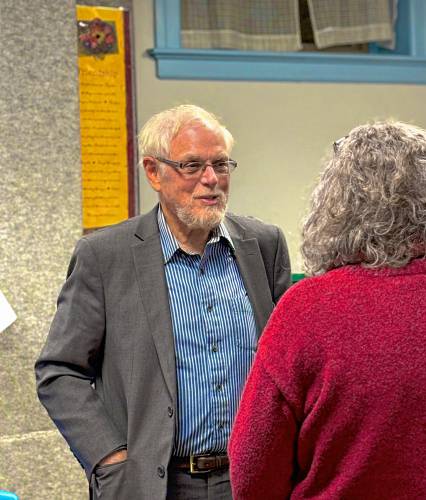
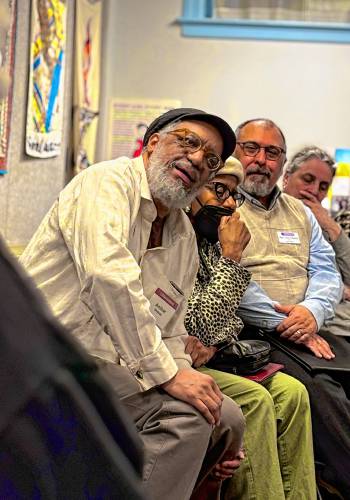
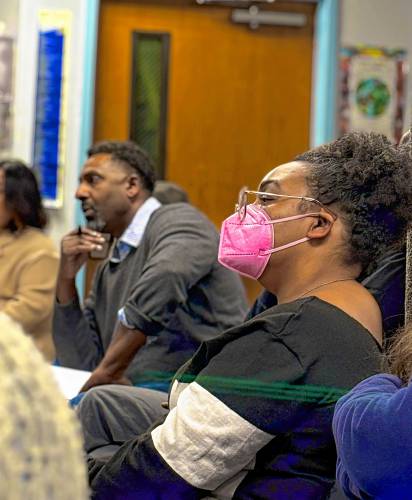





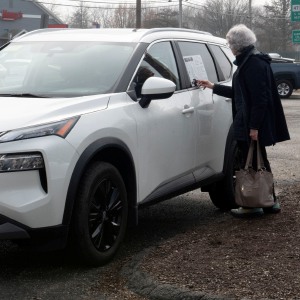 Dash to the dealership?: Local consumers, car sellers brace for auto tariffs to kick in Wednesday
Dash to the dealership?: Local consumers, car sellers brace for auto tariffs to kick in Wednesday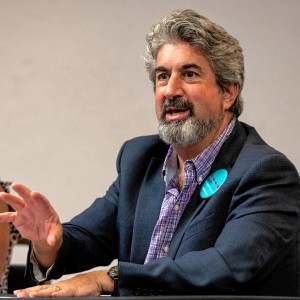 MTA president offers ways for legislators to address ‘unprecedented dangers’ to K-12 education in state
MTA president offers ways for legislators to address ‘unprecedented dangers’ to K-12 education in state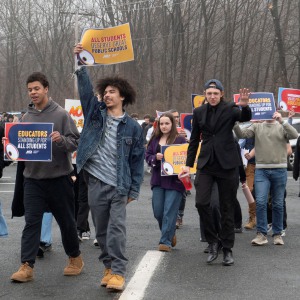 Nearly all of South Hadley High’s student body holds ‘walkout to walk-in’ rally to oppose cuts, call for funding reform
Nearly all of South Hadley High’s student body holds ‘walkout to walk-in’ rally to oppose cuts, call for funding reform ‘Wallace the Brave’ tumbles onto Gazette comics page
‘Wallace the Brave’ tumbles onto Gazette comics page
